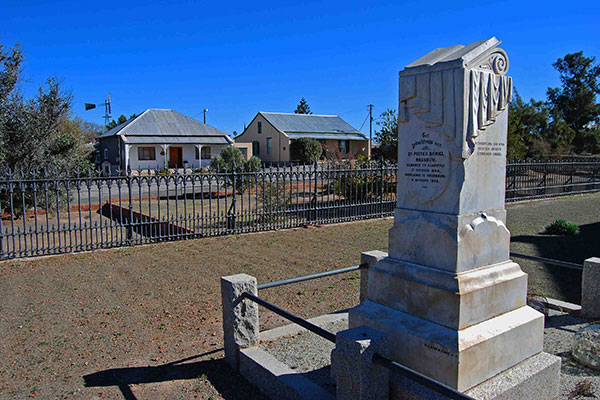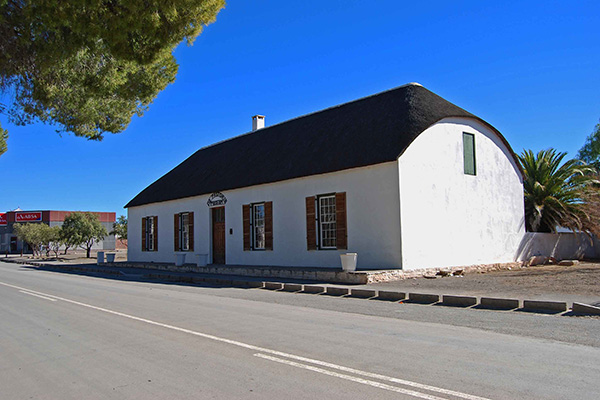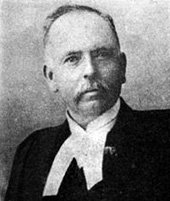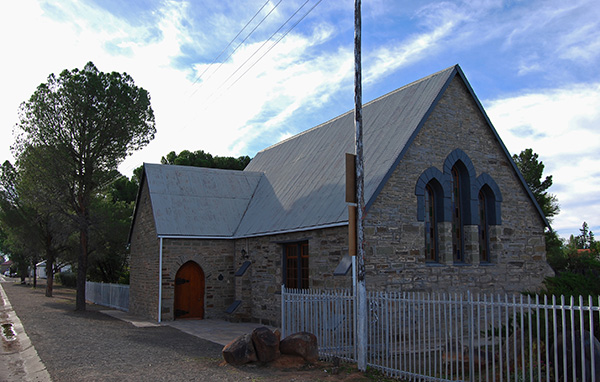History
The history of Fraserburg reaches back more than 250-million years with the discovery of a paleosurface on the farm Gansfontein in 1968. Heavy rains washed away the surface soil revealing footprints and indications etched into the rocky surface of a variety of prehistoric creatures. The most notable of these creatures was the footprints of the three-metre long, five-toed, dinocephalians of Bradysaurus.
Astonishingly much of the rocky surface is rippled indicating that the area was inundated with mighty rivers and swamplands and there are extensive indications of fossilised water scorpions and fish.
In more recent times the region was the preserve of the San or Bushman who ultimately came into conflict with the trekboere or nomadic farmers who began to move onto the Nuweveld Plateau during the 18th century.
These early years were characterised by conflict and the dispossession of the San’s traditional hunting lands by the trekboere resulting in the San moving out of the area into what is today known as Bushmanland.
At Kerkplaas just outside Fraserburg the remains of the church and home of the Reverend J.J. Kicherer, built in 1803 by the London Missionary Society, can be seen. This early mission was established to spread Christianity to these early inhabitants of the district.
In 1851 it was decided to establish a parish for the Dutch Reformed Church in the area west of Beaufort West for the growing number of stock farmers in the district and in the same year the new village was surveyed and named in honour of the Reverend Colin Fraser of Beaufort West who was the father of the wife of the President of the Orange Free State, President M.T. Steyn.
During this time, the only transport was by horse and horse drawn carriage. The post was delivered from time to time by stage coach from Beaufort West. Most farmers in the district visited the town as seldom as four times a year for the Church Nagmaal or Communion. Travel was gauged by the distance a horse could ride in one hour which is about 6-miles or 10-kilometres.
Fraserburg played an important pioneering role in the development of the Afrikaans language. In 1870 a number of “boerenbrieven” or farmers letters were written by a local resident, by coincidence an Englishman, by the name of H.W.A. Cooper, in the Afrikaans idiom and spelling of the time.
His writings were published in Het Volksblad under the pseudonym Samuel Zwaartman.
In later years the Reverend P.D. Rossouw wrote the first sermons in Afrikaans which were published in Die Afrikaanse Patriot, the first Afrikaans language periodical published in Paarl. These early writings provided considerable impetus to the movement to replace Dutch with Afrikaans as the written language of the Afrikaans people.
A post office was opened in Fraserburg in 1858 which led to an era of development for the town. A magistrate’s office opened in 1859. The police station opened in 1860 and a doctor moved to the town in the same year.
The Fraserburg prison opened in 1861 closing down more than a century later in 1968 – there is very little crime in the area.
The first electric power was supplied on 16 September, 1958 and the town was finally linked to the national electricity grid as late as 1983.







